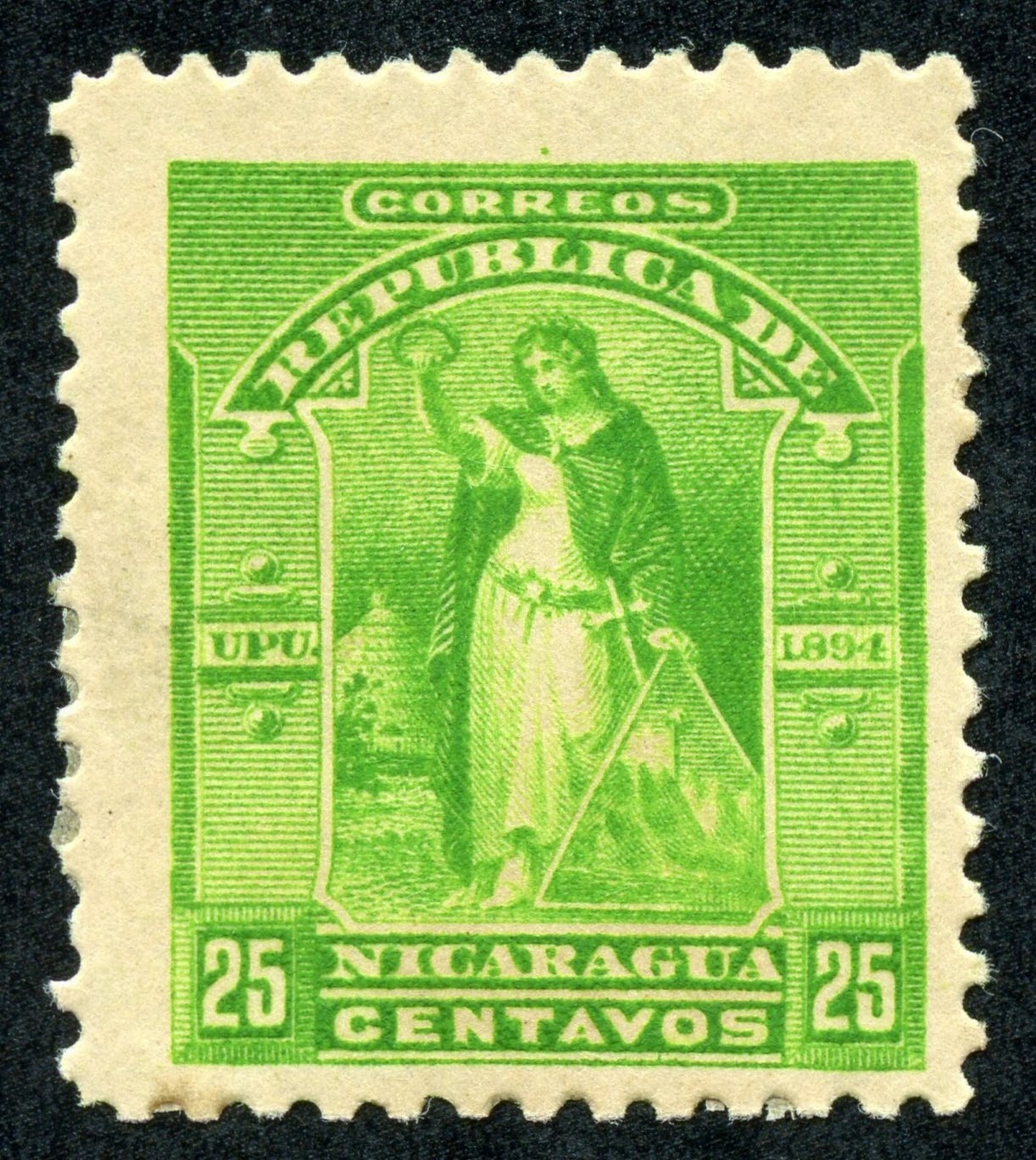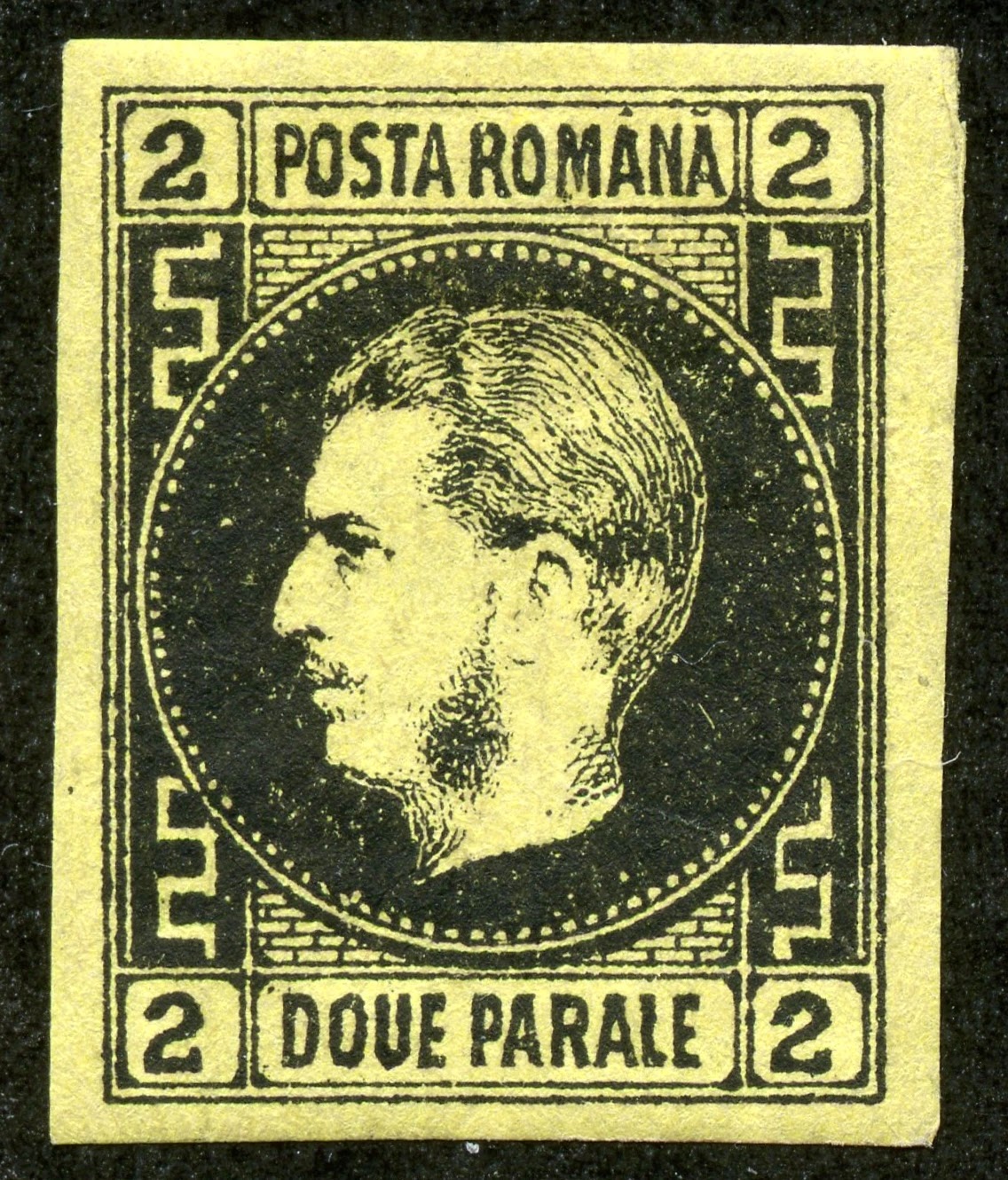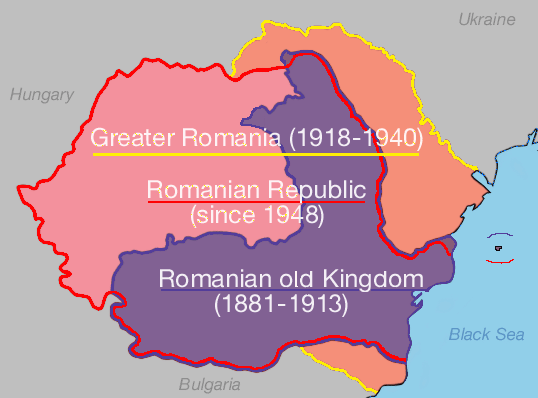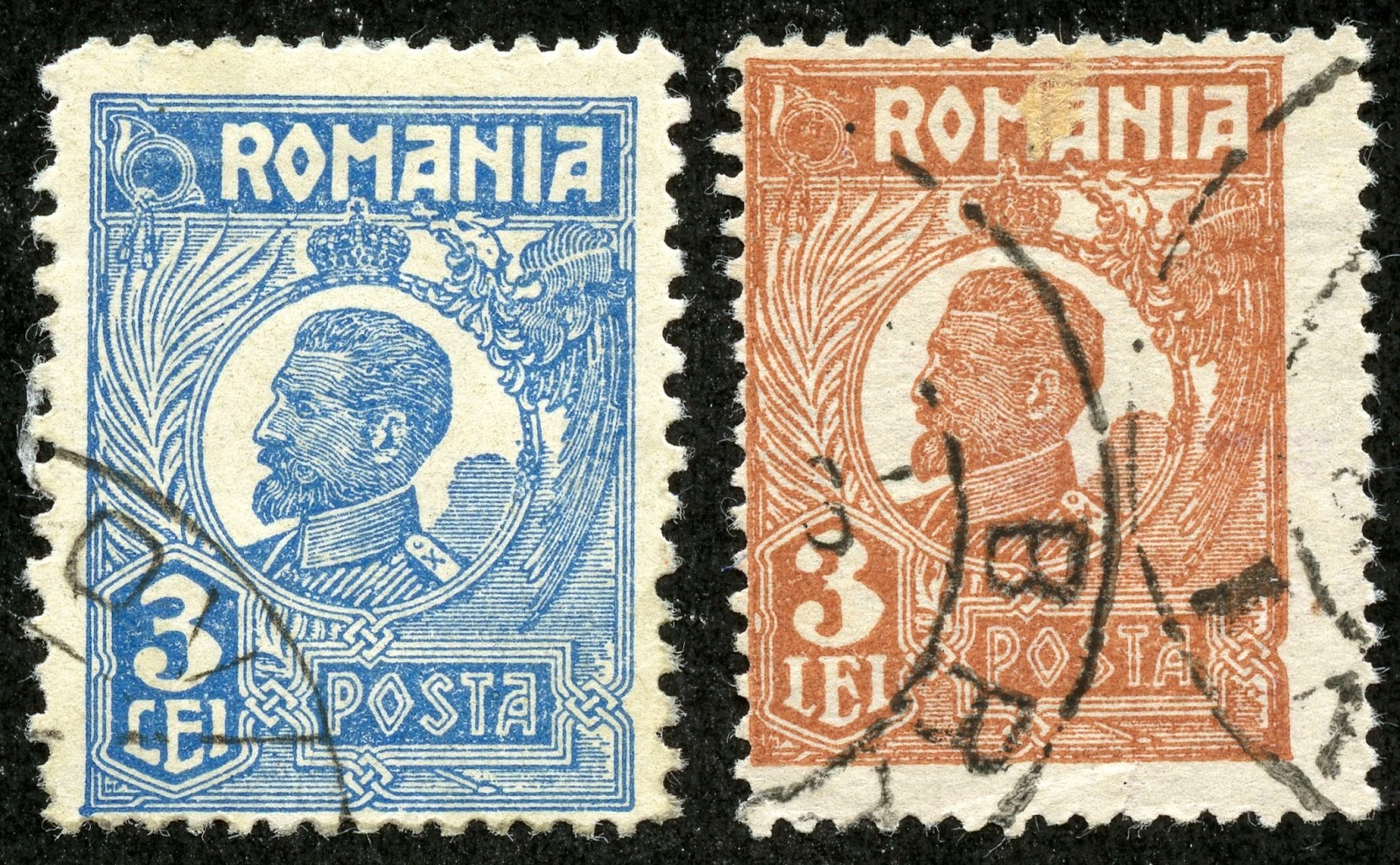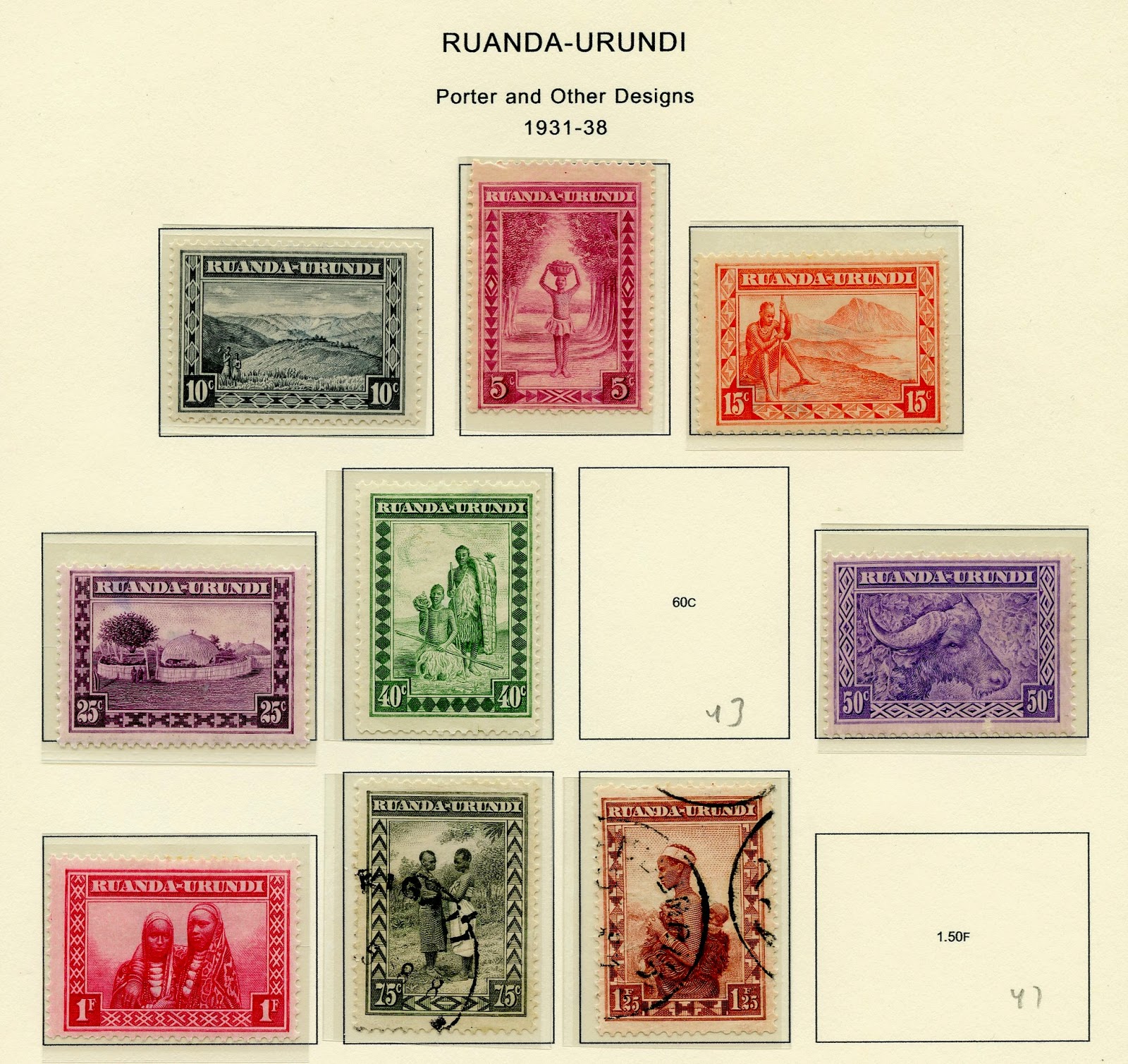1867 Scott 29 2pa black/yellow "Prince Carol"
Quick HistoryThe Principalities of Moldavia and Walachia became effectively united in 1859 through the election of the same Prince or Domnitor,
Alexandru loan Cuza. He was a patriot during the 1848 Moldavia and Wallachia revolutionary efforts and "national awakening", and strongly advocated for the union of the two principalities.
The United Principalities of Wallachia and Moldavia 1859-62
Romanian United Principalities 1862-66
Romania 1866-81
Romania remained a de jure vassal of the Ottoman Empire from 1859-77. But following the 1877-78 war of independence, Ottoman rule, such as it was, ended.
In 1866, Cuza was deposed, and Prussian Prince Carol of Hohenzollern-Sigmaringen was elected- supported by Prussia.
The capital was Jassy (lasi) and Bucharest (1859-62), and then Bucharest (1862-1881).
The population was 5,300,000 in 1880.
A hereditary constitutional monarchy was established in 1866. In 1881, Romania's parliament declared the country a kingdom, and Prince Carol I became King Carol I.
To be continued .....
1868 Scott 36 18b scarlet "Prince Carol"
Into the Deep BlueThe 2011 Scott Classic Specialized 1840-1940 catalogue has, for Romania 1858-1942, 931 major number descriptions. Of those, 545 are CV <$1-$1+, or 59%. The earlier Romania, though, is fairly expensive through 1880 (74 major numbers). The more modern Romania is quite inexpensive.
Romanian stamps are fascinating, but unfortunately, most of the earlier issues have been counterfeited, some extensively. Varro Tyler, in his book "Focus on Forgeries- c2000", devotes 10 pages to the forgeries of Romania!
If you wish to delve further into the attractive issues of this country, there is a wonderful web site resource.
http://www.romaniastamps.com/I plan to publish three blog posts for Romania. This post will examine the 1858-1880 issues. The next submission will cover the 1885-1926 stamps. And finally, I will review some specific forgeries.
A closer look at the stamps and issues40 Parale = 1 Piaster
100 Bani = 1 Leu (plural "Lei") (1868)
1864 Scott 21 30pa deep blue
Moldavia-Walachia "Coat of Arms"
The first issues for the region were the handstamped "Bulls" stamps for Moldavia in 1858 and 1858-59 respectively. The design has a small star over a bull head above a posthorn, The ten Scott major numbers are expensive ($100+-$25,000), forgeries need to be ruled out, and I don't have any. ;-)
The Moldavia-Walachia issues (11 stamps) were produced in 1862 (Printed by hand from single dies) and 1864 (Typographed). I show a copy of the typographed 1864 three stamp issue here. CV ranges from $10+-$60 for the 1864 issue.
Moldavia Coat of Arms
The Moldavia-Walachia issues combine the "Coat of Arms" of the two principalities. Moldavia featured a "Bull".
Walachia Coat of Arms
Walachia has had a raptor (eagle) on it's seal since at least 1390.
1864 5pa "Prince Alexandru loan Cuza"
Never placed in use
The first issue, with "Romana" inscribed, was this design on three stamps produced in 1864- but never placed in use, according to Scott. CV (set) $9. It has, appropriately, Prince Cuza's vignette, the man most responsible for uniting the two principalities.
1865 Scott 23 5pa blue "Prince Alexandru loan Cuza"
A three denomination lithographed set was issued in 1865. CV ranges from $35 - $70.
Counterfeits can be found- refer to
http://www.romaniastamps.com/forg/forgeframe.htm for specifics.
(In fact, all the early Romanian stamps were counterfeited. Caveat Emptor. )
1865 Scott 24 & Scott 25 20pa red
Type I & Type II
The 20pa red is found in two types. In Type I, the central oval does not touch the frame below, and the "I" of DECI is elongated. In Type II, the central oval touches the frame below, and the "I" of DECI is the same length as the other letters.
1867 Scott 31 20pa black/rose "Prince Carol I"
Type I
When Prince Cuza was forced to relinquish his post- apparently he pleased neither the liberals or conservatives- Prince Karl of Hohenzollern-Sigmaringen was elected on April 20, 1866- backed significantly by Prussia. He was Prince (Domnitor), then King (1881) until 1914.
A four stamp set was issued for Prince Carol in 1866-67. Thick paper (minor numbers) was used in 1866, thin paper in 1867.
CV is $30-$60.
Of interest, the 20pa black/rose can be either found as Type I (Border at upper right goes from right to left), or Type II (Border at upper right goes from left to right).
Prince Karl of Hohenzollern-Sigmaringen
When the Ottoman Empire was defeated in 1878 (Russo-Turkish War), Prince Carol declared the country independent- they had been under nominal control of the Ottoman Empire until then.
He became King of Romania in 1881, and his Hohenzollern-Sigmaringen lineage ruled until 1947.
He apparently was a rather meticulous and cold person, and liked to wear his crown to bed.
He never produced a male heir (a daughter died at age three), His brother Leopold was next in line for the throne. But Leopold relinquished his right in 1880 to his son William, who, in turn, surrendered his right in 1886 to his younger brother, Ferdinand. Ferdinand eventually became King from 1914-1927.
![]()
1870 Scott 34 3b violet "Prince Carol"
A four stamp set was issued between 1868-70 with the illustrated design. CV $30-$47+.
1869 Scott 41 25b orange & blue
A different design for the frame resulted in a five stamp issue in 1869. The two higher denominations are bicolored. CV is $20+-$50+.
1871-72 Scott 46 15b red "Prince Carol"
Still imperforate, a five stamp issue was released in 1871-72. CV ranges from $35 to a hefty $200+.
1872 Scott 51 & 51a 10b "Prince Carol"
Blue & Ultramarine Colors
The first perforated issue ( Perf 12 1/2) of three stamps was released in 1872. The design is the same as the earlier 1871-72 issue.
I'm showing here two colors for the 10b denomination- blue and ultramarine (minor number).
1872 Scott 59 50b rose/pale rose "Prince Carol"
Paris Print, Fine Impression; Perf 14 X 13 1/2
Resembling French stamps- no doubt because they were designed and printed in Paris- a new 1872 typographed seven stamp issue was developed. This release is on tinted paper, has fine impressions, and is found Perf 14 X 13 1/2. CV is $4+-$40+.
1876 Scott 61 5b bister/yellowish
Bucharest print, Rough Impression; Perf 11
The plates then were brought to Bucharest, where "rougher" impression stamps were produced. The 1876-79 issue had five stamps, and, importantly, are found with perforations 11, 11 1/2, 13 1/2, and compound. It is fairly easy to differentiate the Paris and Bucharest printings on perforations alone.
1879 Scott 72 50b bister/yellowish
More Bucharest "rougher impression" stamps were released in 1879 with the same perforations as the 1876-79 issue. There are seven stamps, and the colors for the same denomination are different from the 1876-79 issue.
1880 Scott 74 25b blue "King Carol I"
Finally, a two stamp issue was produced in 1880 on the cusp of Romania becoming a kingdom and Carol trading in his "prince' title for "king".
You may have noticed that, for the early perforated issues for Romania, the perforations often cut into the design. For this issue, the Scott's CV ($2+-3+) is for the grade of "fine".
Deep Blue
Romania 1868-70 Issue in Deep Blue
The Deep Blue (Steiner) album has 76 pages for the stamps of Romania, and has a space for all the major Scott numbers.
1869 Scott 42 50b blue & red "Prince Carol"
Big Blue
Big Blue '69, on 19 pages, has 530 spaces for the stamps of Romania. Coverage is 57%.
Observations....
* There are 18 stamps with CV over $10, with six @ CV $35- $60 (Most Expensive Stamps category).
* Of interest, BB specifies (through image cut), Scott 32 20pa black/rose-Type II- "The Greek border at the upper right goes from left to right", rather than Scott 31 Type I "The Greek border at the upper right goes from right to left". Both have the same CV ($20+), but I have five copies of Type I in my collection, and none of Type II. :-(
* There are some curious omissions. The 1930 Scott 353-357 "Michael Type of 1928" issue is left out. And the Postage Dues have spaces for the 1911 issue, but not the 1919,1920,1920-26, and 1923-24 issues consisting of 24 stamps, all of them close to minimum CV.
* Semipostals are generously represented. Of the 150 semipostals in the catalogue, BB has 139!
Checklist
1862-63 (Actually- 1864)
20+,21+,
1865
22 or 26,23 or 27,24 or 25,
1866
29,32*,
1872-78
53 or 60,61,56,64,58,59,
1879
66,67,68,69,70,71,72,
1880
73,74,
1885-89
75 or 88,76 or 81 or 89,83,77or 90,91,78 or 92,79,87,
1890-94
94 or 101,95 or 102a or 102,96 or 103,
97,98,99 or 106 or 115,100 or 107 or 116,
Next Page
1894-1901 (actually 1893-)*
117 or 132 or 148, 118,119 or 135 or 149, 120,122,124,126,
128 or 142 or 154,129 or 143 or 155,130 or 144 or 156,131 or 146 or 157,
121 or 136 or 150,123 or 137 or 151,125 or 138 or 152,127,
1901-02
133,139,
1903*
158,159,
1903-05
134,140,145,
1906
176,177,178,179,180,
181,182,183,184,185,
Next Page
1906
186,187,188,189,190,191,
192,193,194,195,
196,197,198,200,
1908
207,208,209,210,211,213,215,216,
1908-18
217,218,219,220,222,223,212*,
Next Page
1913
230,232,233,234,231,
1918
241,242,
1919
245,246,247,248,249,
1919
250,251,252,254,255,256,258,
1920-25
261,262,264,266,267,268,269,
270,271,272,274,277,279,281,
1922
283,284,285,286,288,287,
Next Page
1926
291,292,293,294,295,296,
1927
308,309,311,312,
313,316,318,319,
1927
310,314,
1928
320,322,
1928-29*
321,323,324,325,326,327,328,
1928
329,330,331,332,
Next Page
1928
336,337,338,340,
1928
341,
1929
347, 352,
348,349,350,351,
1930*
359 or 368,360,361,363,364,365,362,
366 or 368A,362A,380,381,382,383,
369 or 405,370,371 or 407,372 or 408,373 or 409,374 or 410,375 or 411,
Next Page
1930
376 or 412,377 or 413,378,379 or 414,
1931
384,386,
1931
385,387,388,389,390,
391,394,395,392,393,400,
1931
396,397,398,399,415,
1931
403,
1932
417,418,419,
1932
421,422,423,424,425,426,427,
Next Page
1933-34
429,430,431,432,
433,434,435,436,
437,438,439,440,441,
1935-40
442,443,444,445,
446,447,448,449 or 449A,450,450A,
451,452,453,454,455,456,
Next Page
1935-40
457,458,459,460,
1937
467,468,
1937-39
463,464,465,466,
473,474,472,470,471,
477,479,480,481,482,
483,484,485,486,488,
Next Page
1939-40
489,490,493,494,
495,496,497,498,
491,492,504,505,
506,507,508,509,510,511,512,
Next Page
Semi-Postal
1906
B1,B2,B5,B6,B7,
B13,B14,B15,B16,B9,
1906
B10,
1927
B21,B22,B23,B24,B25,
1907
B17,B18,B19,B20,
1931
B26,B28,B27,B29,B30,
Next Page
Semi-Postal
1931
B31,B32,B33,B34,B35,B36,
1934
B44,B45,B46,B47,B48,B49,
1932
B37,B39,B38,
1934
B41,B43,
1934
B42,
1935-36
B52,B54,B50,B51,
1935-36
B53,B56,B57,B61,B58,
Next Page
Semi-Postal
1936
B59,B62,B60,B63,B64,B65,
B66,B67,B68,B55,
1937
B69,B70,B71,B72,B75,
B73,B74,B76,B77,B78,
1937
B79,B80,B81,
1938
B94,B97,B98,
Next Page
SemiPostal
1938
B95,B96,B83,B84,B85,
B86,B87,B88,B89,B90,B91,
1938
B92,B93,B82,
1939
B99,B100,
1939
B101,B102,B103,B104,B105,B106,
B107,B108,B109,
1940
B113,B114,B116,
Next Page
Semi-Postal
1940
B115,B117,B118,B119,B120,B121,
B122,B123,B124,B125,B126,
B145,B127,B129,B130,
B128,B131,B132,B133,B134,
B138,B139,B140,B141,B142,B143,B144,
Next Page
Occupation Stamps
1917
1N1,1N2,1N3,1N4,1N5,1N6,
1918
1N18,1N19,1N20,1N21,1N22,1N23,
1N24,1N25,1N26,1N27,1N28,1N29,
1N30,1N31,1N32,1N33,1N34,
1916
2N1,2N2,2N3,2N4,
1918
3N8,3N9,3N10,
1918
3N11,3N12,
Offices in the Turkish Empire
7,8,9,
Next Page
Air Post
1928
C1 or C4,C2 or C5,C3 or C6,
1930
C13,C14,C15,C16,
1931
C17,C18,C19,C20,
Semi-Postal Air Post
1940
CB1,
Next Page
Postal Tax
1916
RA3,RA5,
1921-24
RA13,(RA14 or RA15),
1931
RA16,RA17,RA18,
1932
RA19,RA20,RA21,
1937
RA22,RA23,RA24,
Next Page
Postal Tax Due
1915
RAJ1,RAJ2,
1916
RAJ3,RAJ4,
1922
RAJ12,RAJ13,
Postage Due
1881-1911
2 Bani: J1 or J9 or J14 or J18 or J24 or J30 or J36
Four blank spaces: (J1-J40 except for postage due number used for 2 Bani)
1911*
J41,J42,J43,J44,J45,J46,J47,
1932-37
J83,J84,J85,J86,
Parcel Post
1895-1911
Q1 or Q3 or Q6,Q2 or Q4 or Q5,
Official Stamps
1929
O1,O2,O3,(O4),(O5),(O6),(O7),
1931-32
O25 or O29,O26,O27 or O31,O28 or O32,O33,
End
Comments
A) Expensive stamps ($10 threshold):
1864 Scott 20+ 6pa deep rose ($20+- (there are several other much more expensive choices also)
1864 Scott 21+ 30pa blue ($10+ - (there are several other much more expensive choices also)
1865 Scott 26 2pa orange ($60)
1865 Scott 23 5pa blue ($45)
1865 Scott 64 (TI) or Scott 65(TII) 20pa red ($35)
1866 Scott 29 2pa black/yellow ($35)
1866 Scott 32 20pa black/rose ($20+)
1872 Scott 58 25b orange/pale buff ($10+)
1872 Scott 59 50b rose/pale rose ($42+)
1879 Scott 67 3b olive green/bluish ($10+)
1879 Scott 70 15b rose red/yellowish ($10+)
1879 Scott 71 25b blue/yellowish ($20+)
1879 Scott 72 50b bister/yellowish ($35)
1885-89 Scott 87 50b bister/pale buff ($20+)
1891 Scott 107 50b orange ($10+)
1906 Scott B7 10b (+10b) carmine ($10+)
1932 Scott B36 6l + 6l black brown ($10+)
1934 Scott B49 6l + 6l black brown ($10+)
B) *32 BB's illustration cut specifies Scott 32 -Type II- "The Greek border at the upper right goes from left to right", rather than Scott 31 Type I. !!
C) *1894-1901 (actually 1893-)- Choices do not include 1911- 19 Scott 224-229 "Types of 1893-99".
D) *1903- counterfeits abound!
E) *212- an A44 design, while the rest of the row is an A46 design!
F) *1928-29- choices do not include smaller 1930 Scott 353-357 "Michael Type".
G) *1930 - Choices are because of different watermarks (wmk 225 vs wmk 230).
H) *1911- Postage due choices do not include the 1919,1920,1920-26, and 1923-24 issues!
I) ( ) around a number indicates a blank space choice.
1879 Scott 68 5b green/bluish "Prince Carol"
Out of the Blue
I really like the early stamps of Romania, and if I ever concentrated (specialized) my interests, Romania would be a prime candidate. ! Of course, one would need to become well acquainted with forgeries also. ;-)
Note: Map, image pics appear to be in the public domain.
Comments appreciated!



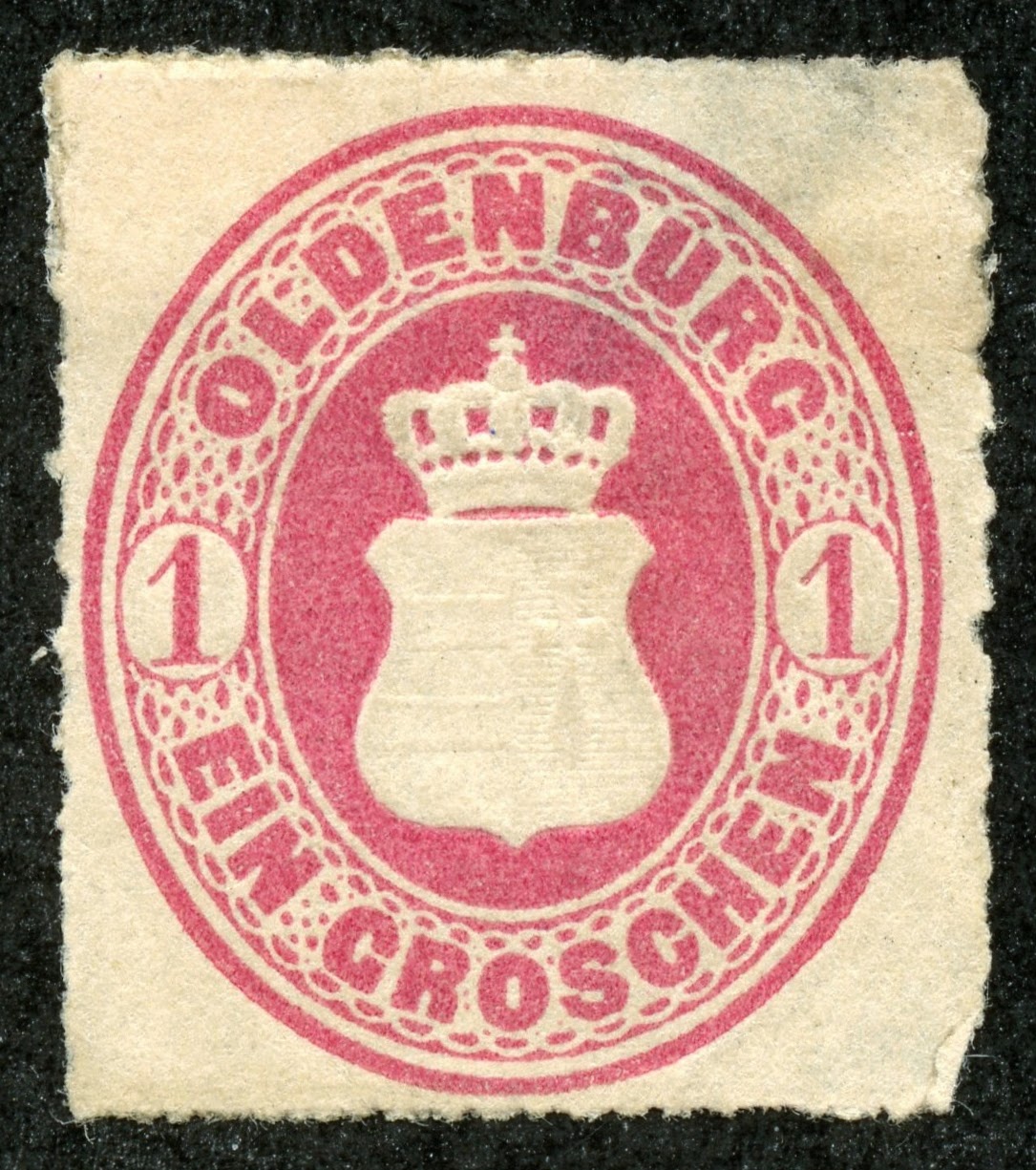









































.png)





























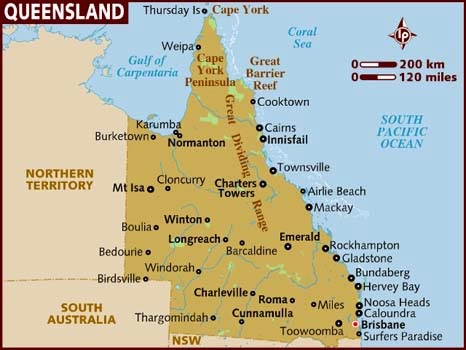












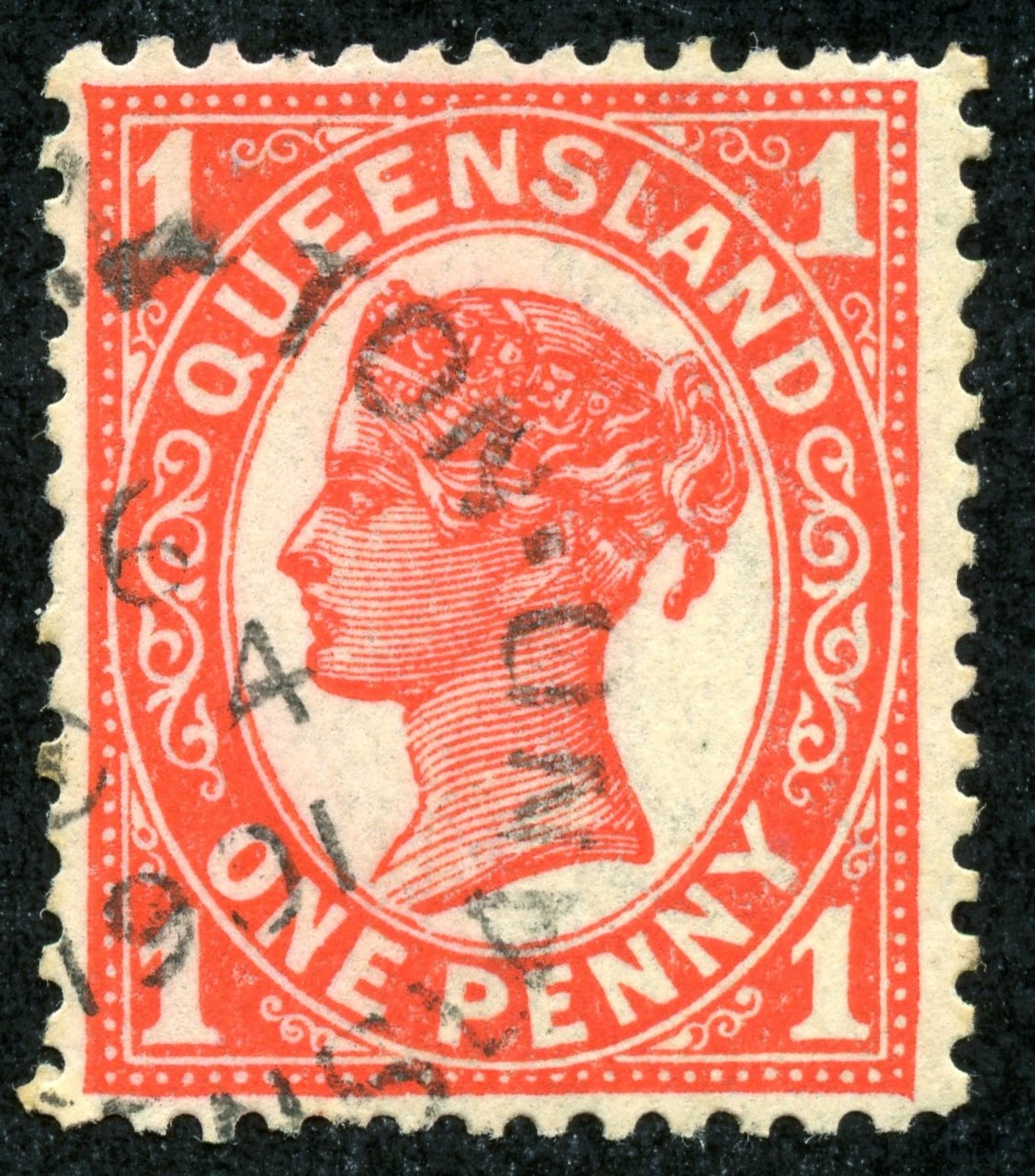






.jpg)










-byTodorBozhinov.png)

























